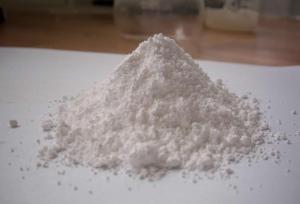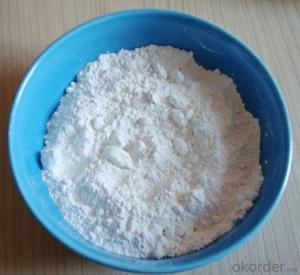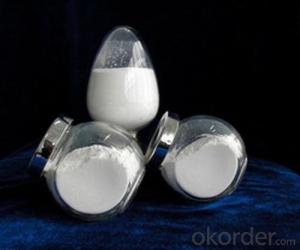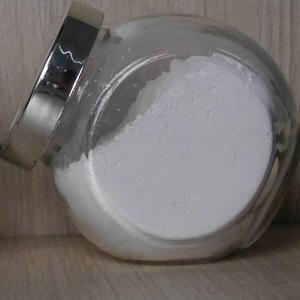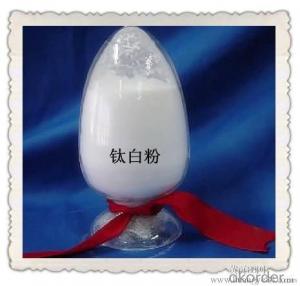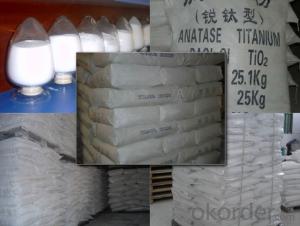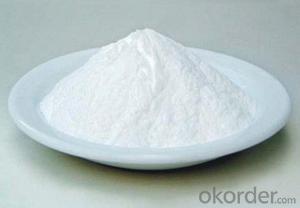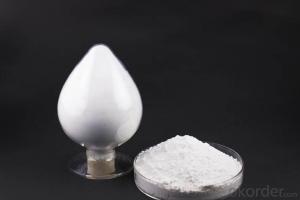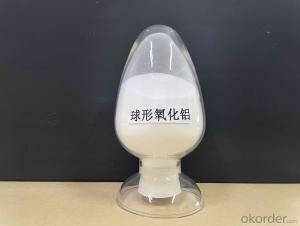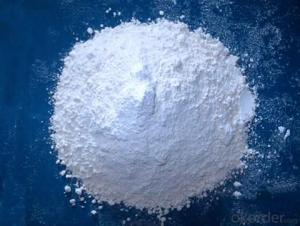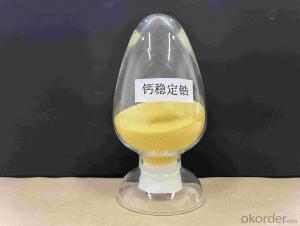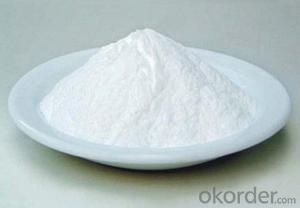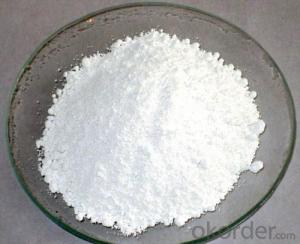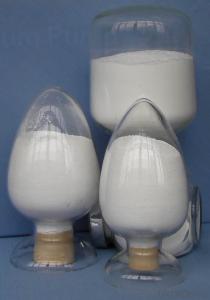Spherical Silica Powder(according to customer requirements)
- Loading Port:
- China main port
- Payment Terms:
- TT OR LC
- Min Order Qty:
- 1 m.t.
- Supply Capability:
- 1000 m.t./month
OKorder Service Pledge
OKorder Financial Service
You Might Also Like
Our company uses high-temperature flame melting method to produce spherical quartz powder, which has superior properties such as smooth surface, large specific surface area, high hardness, and stable chemical properties. The spherical quartz powder can be used in the industries below:
Epoxy Molding Compound(EMC): It can be used as filling material in the EMC to reduce thermal expansion and increase the intensity, thermal conductivity, corossion resistance of component and to save large quantity of resin.
Copper Clad Laminate(CCL): To increase the intensity and thermal conductivity of product so as to decrease production cost. Paiting and ink: To crease the absoption of ultraviolet and reflection of infrared ray so as to improve the aging property the color of paintings and inks. It could also used as deluster because of its property of anti-sedimentation.
Paiting and ink: To crease the absoption of ultraviolet and reflection of infrared ray so as to improve the aging property the
color of paintings and inks. It could also used as delusterbecause of its property of anti-sedimentation.
Cosmetics: our product can be applied to lipsticks, compact and foundation creamdue to its good dispersity and solubility in oil and water.
Ceramic composites: with good dielectric properties, low thermal expansion coefficient and good electrical insulation, they can be used for precision ceramics electronic ceramics, aerospace ceramics, honeycomb ceramics and special refractories.
Features:1.high spheroidization rate: ≥95%; 2. good sphericity: ≥90;
3. High purity: the putiry of raw material is high and the contamination is avoided during the production;
4. Particle size distribution: the particle size distribution is controlable due to the accurate seiving method and vertex cutting.
5. High fludity: the dispersity is good and filling rate is high because we optimized our recipe on the particle size by adopting the theory of high packing.


- Q: What is the zinc oxide?
- Zinc oxide is an oxide of zinc. Hard to dissolve in water, soluble in acid and alkali. Zinc oxide is a commonly used chemical additive, widely used in plastic, silicate products, synthetic rubber, lubricants, paint coatings, ointment, adhesives, food, batteries, flame retardants and other products in the production. Zinc oxide band gap and exciton greater binding capacity, high transparency, excellent room temperature luminescence performance in the semiconductor field of liquid crystal display, thin film transistors, light-emitting diodes and other products are used. In addition, the micro-particles of zinc oxide as a nano-materials also began to play a role in related areas.
- Q: What is called transition metal oxide doping
- Transition element refers to a series of metal elements in the d-region of the periodic table, also known as transition metal, including chromium, manganese, iron, cobalt, nickel, copper, zinc and so on are transition metals.
- Q: Is the oxide pure?
- Pure substances are divided into simple substances and compounds, oxides belong to the compound, naturally belong to the pure material
- Q: Oxide and organic peroxide signs
- An organic compound containing -O-O-peroxy functional group formed by replacing hydrogen atoms in hydrogen peroxide with an organic group such as an alkyl group, an acyl group, an aromatic group or the like. Characterized by heating more than a certain temperature will decompose to produce oxygen free radicals, unstable, easy to break down. Chemical production of organic peroxides is mainly used for synthetic resin polymerization initiator, catalyst. In the field of polymer materials, it can be used as a radical polymerization initiator, graft reaction initiator, rubber and plastic cross-linking agent, unsaturated polyester curing agent and spinning grade polypropylene in the preparation of molecular weight and Molecular weight distribution regulator. Environmental pollution in the air under the action of light through the free radical reaction can produce peroxy nitrates compounds, photochemical oxidants in one of the species. On the skin, eyes, mucous membrane has a strong irritant, is an important pollutant in the atmosphere. Such substances are flammable and explosive dangerous goods, the use should pay attention to safety. Generally, the active oxygen content, activation energy, half-life and decomposition temperature were used as the basis of selection.
- Q: Whether the metal oxides are alkaline oxides
- CrO3, Mn2O7 are metal oxides, they are acidic oxides
- Q: Is SiO2 an amphoteric oxide?
- Not though SiO2 reacts with HF but the reason for this reaction is not because H + is because Si and F-coordination generated SiF4 is very stable.
- Q: How to judge a chemical formula is not an oxide
- Note that the most critical point is that all the oxygen elements must be -2 price, because there are some exceptions such as sodium peroxide, potassium oxide, but also by the two elements, one of which is the oxygen element, but the peroxide Sodium oxygen element is -1 price, the oxygen element of potassium oxide is -0.5. On the contrary which chemical formula is not an oxide at a glance
- Q: What are the oxides of chlorine
- Chlorine Oxide (ClO) Chlorine Dioxide (ClO2) Chlorine Oxide (ClO3)
- Q: What is the oxide
- ? Oxide belongs to the compound, it must be pure, its composition contains only two elements, one of which must be oxygen, and the other if the metal element, compared to metal oxide; if non-metallic, Metal oxide
- Q: Acidic oxide is a kind of oxide which can form acid or react with water to form salt and water. Generally non-metallic elements of oxides and certain transition metal elements of high-priced oxide. Such as sulfur trioxide SO3, phosphorus pentoxide P2O5, manganese dioxide Mn2O7, chromium trioxide CrO3 and so on. Most of the non-metallic oxides are acidic oxides. In our familiar non-metallic oxides, carbon monoxide and nitric oxide are not acidic oxides, and are usually classified as non-acid oxides.
- The corresponding hydrate of the basic oxide is a base. For example, CaO corresponding to the hydrate is Ca (OH) 2, Fe2O3 corresponding to the hydrate is Fe (OH) 3.
Send your message to us
Spherical Silica Powder(according to customer requirements)
- Loading Port:
- China main port
- Payment Terms:
- TT OR LC
- Min Order Qty:
- 1 m.t.
- Supply Capability:
- 1000 m.t./month
OKorder Service Pledge
OKorder Financial Service
Similar products
Hot products
Hot Searches
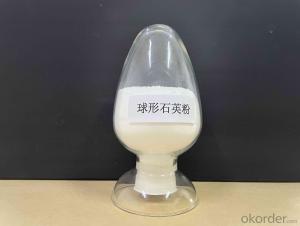

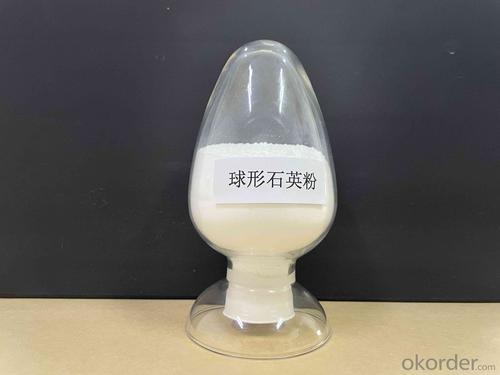
 Bengbu Zhongheng New Materials Scientific and Technological Co.,Ltd
Bengbu Zhongheng New Materials Scientific and Technological Co.,Ltd
